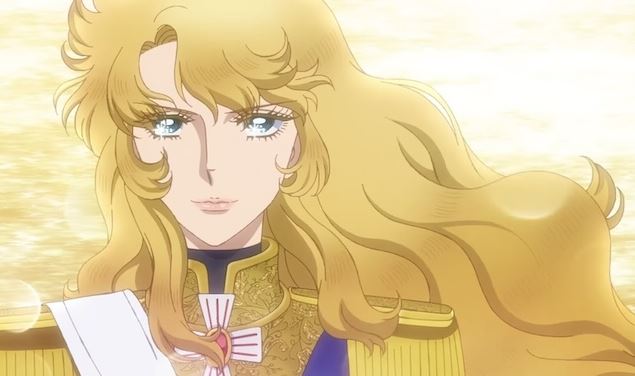Of the thickness that found the maximum expression in the second part of the animated version directed by Osamu Dezaki, and who made Lady Oscar A great classic of animation not only Japanese, capable of resisting half a century, did not remain the surface, delivered to an enameled glossy that only works a little in the glitter of the splendor of Versailles, which in some point satisfies the eye, but ends up running out there, a little end in itself, as discolored by the rest.
This new Vesion of Lady Oscar, from April 30, 2025 in Italian on Netflix (Map Studio), convinces very little: even if you want to imagine it thought (but it would have been a commercial suicide) only for an audience with an not contaminated gaze by the previous animated series of 1979 (arrived in Italy in 1982), and of the 1972 manga (arrived in Italy after the animated version) the vices exceed virtues.
Those who do not know the previous ones risk understanding very little of this indigestible compound of animated scenes interspersed with (too many) unlikely songs that summarize, making little justice to their complexity, the point of view of the main characters, in a naive and sugary waythat a little serve to summarize a little to give vent drawings that refer to a very, too much, different bond of styles.
To this already disharmonious together are added the historical excursus on the period that preceded the French Revolution, very simplified in writing, and designed in a still different way, with a female voice out of the field, which amplify a collage effect in which it is difficult to recognize something unitary that a film even if animated should still represent.
That the previous ones are present is evident, so much so that The author of the manga Riyoko Ikeda, a undeniable creator of the brilliant idea of departure, who has never loved the first animated adaptationto whom he is however debtor as a true architect of the worldwide success of his characters, judges this more faithful version to the original.
In fact, here are all the clichés of the shojo manga of the time: with shiny eyes, to too many tears many of which are disproportionate – if you think about the character of the characters we have known -; But there is so much that they come to betray the value of the original: to stay in the genre daring to tell something more and better than a banal love story.
Here that complex story full of strata, and which implies history, politics, social problems, reason of state, has been reduced to a cloying and not very coherent intertwining of amorous, sighs and amazement affairs that does not do justice to the original structure.
The female figures, at least in the stretch, allow to recognize the family ones and loved by the public – it is clear that those who have dispelled the protagonists could not ignore the previous animated version, in the sense that they retain many details -,, But this too winking Oscar, too feminine in the voice, too sweet is much less credible in its role as an officer than that of the first animated series was.
It is very worse to the male figures all ephebic, rejuvenated, from the sharpened visets, all similar to the point of losing personality and characterization, on the physical and psychological level: only the Count Girodelle is saved: Litted Damerino was and a lecquered Damerino remains, the accentuation makes the idea.
The best successful characterization is certainly that of Marie Antoinette, to which the richness of the clothes gives you to the registry, certainly more accurate and detailed, While the outline makes the pomp of the court. But it is little to save the whole: the Lady Oscar survived 50 years of replicas has held up to the injury of the time, Not only because the heroes who die in battle remain young and beautiful, but but Because he united with effectiveness and, courage for those times, in animation: training novel, historical novel, hood and sword stories, romantic, but never disjointed by political and social issues.
If the labor of its growth in maturing social consciousness is removed from Oscarwho gradually makes her aware of her as she grows in her singularity as a girl who grew up for a male social role, if she takes away from the effort to free herself from the rigidity of a conservative and authoritarian patterns but respected and loved (also complex but here roughly it outlined); If you take away the difficulty of reconciling the social role with a femininity that is under the uniform but that cannot be shown, It is denying you almost everything: And in fact too many of the words that put themselves in her mouth, swollen with a rhetoric that does not correspond to the character we knew at all.
To the point that, Of the authoritative, dry, auite figure, capable of profound inner suffering, it remains little less than a caracatura, not in terms of physicality but of the structure of the character, who has lost almost all his backbone here, relegated to the external carapace of a uniform that wears a cloying and banal femininity.
Not only what merged in a whole here is detached: the story is a background, politics is almost disappeared, the court intrigues are not even guessing. Even in animation something does not make: often figures and backgrounds harmonize with difficulty and also the game of opposing Grisaille or almost for the people and sparkling colors for the nobility seems too manicheum.
Of that great animated fresco that was the first way anime and also of that idea that was the basis of the manga, only the external signs remain. A little more than a shell, beautiful at times, but almost empty.


